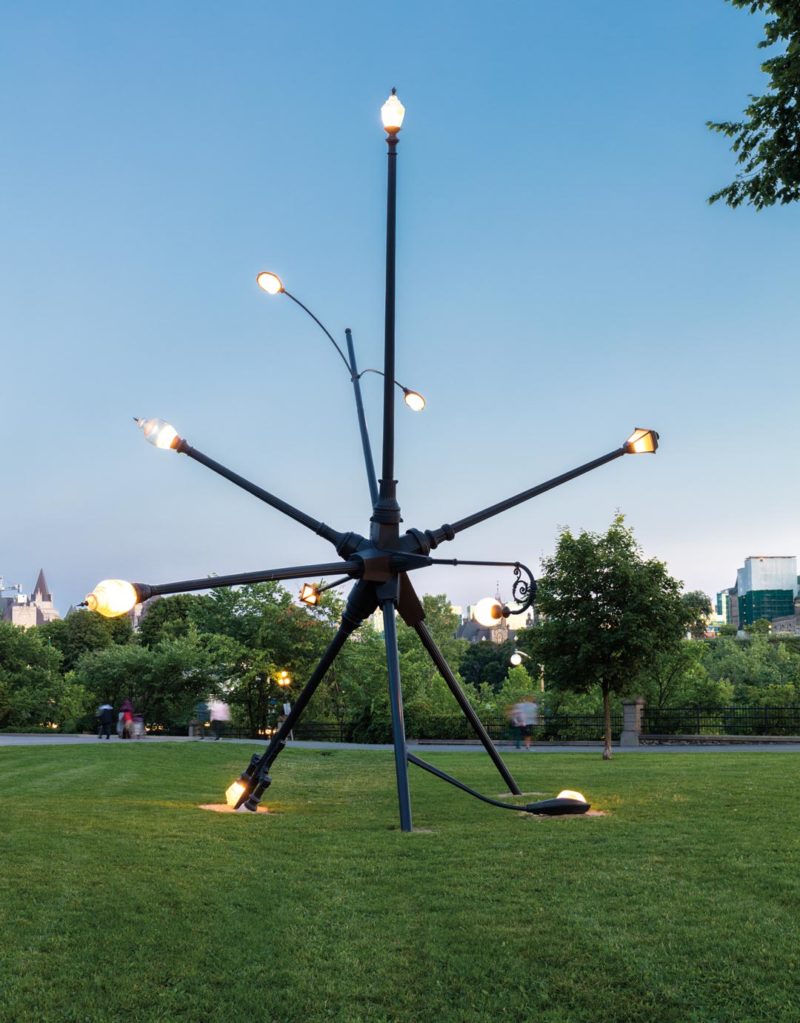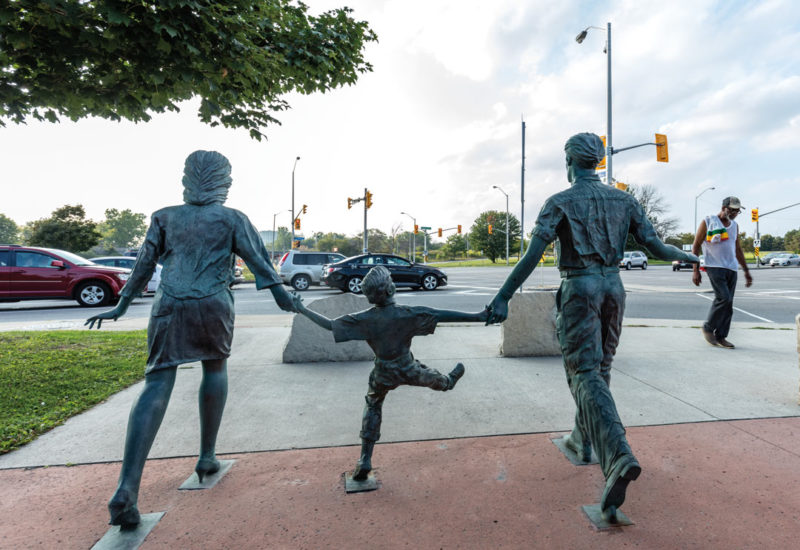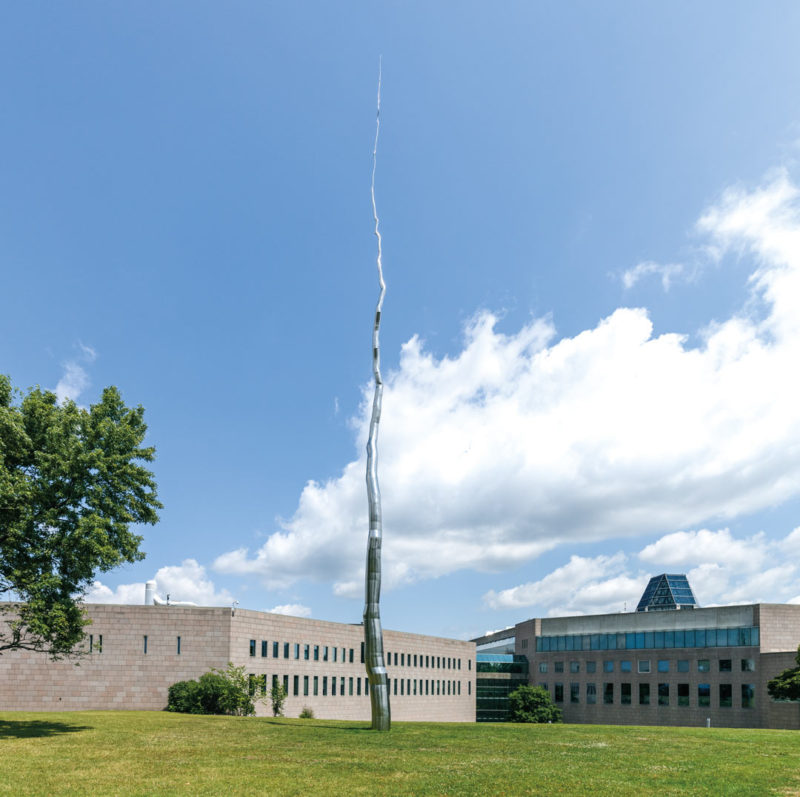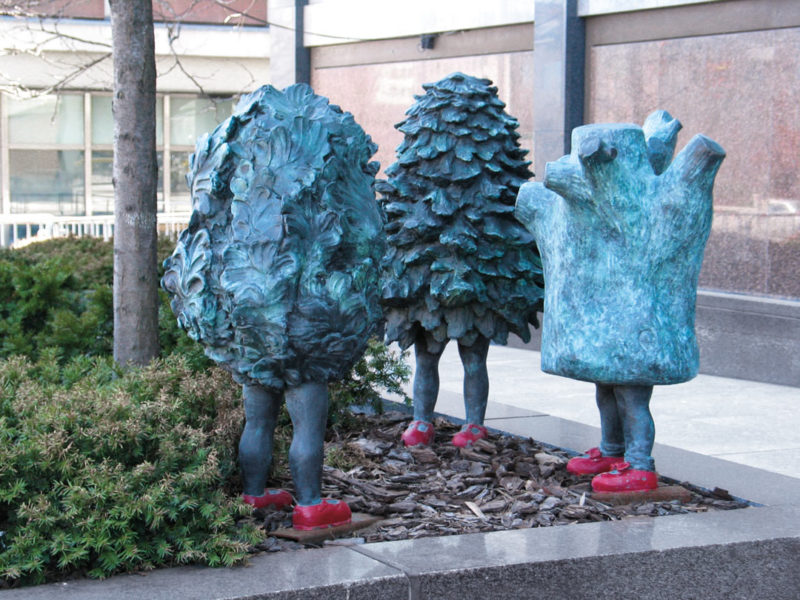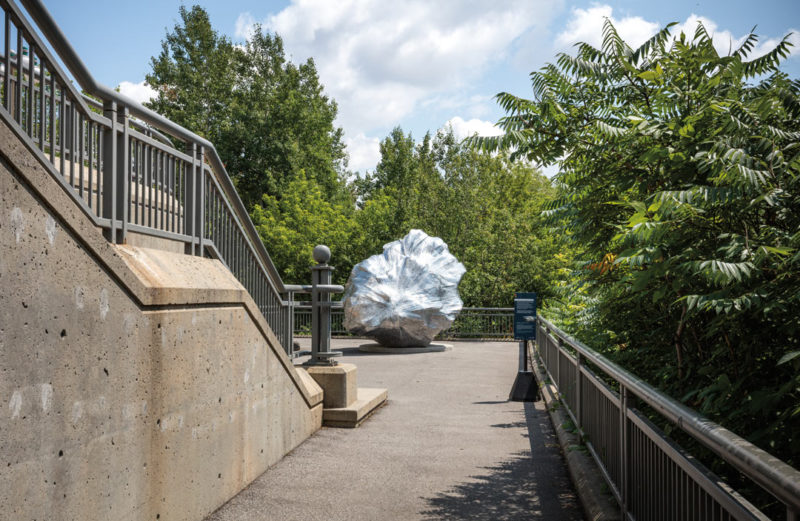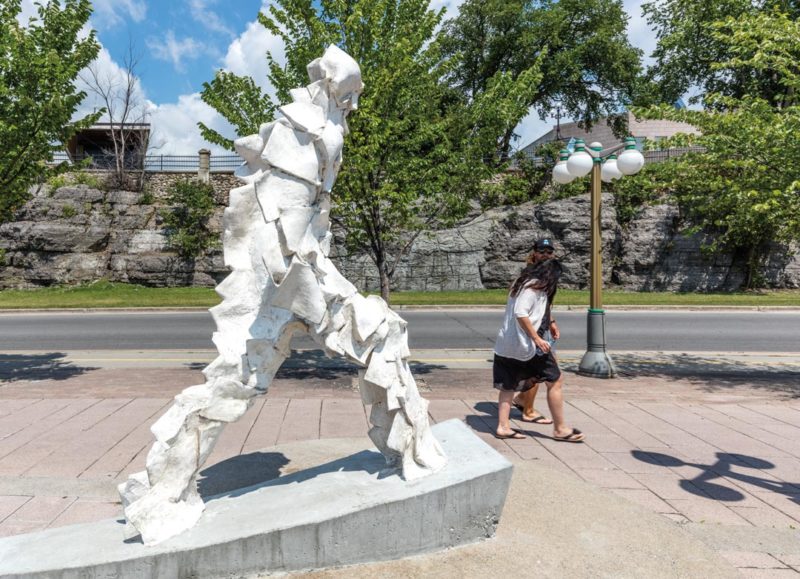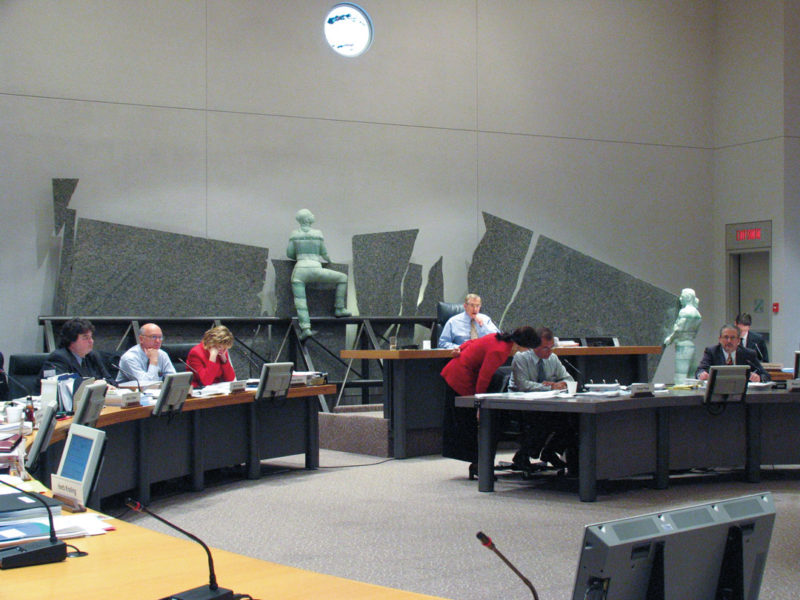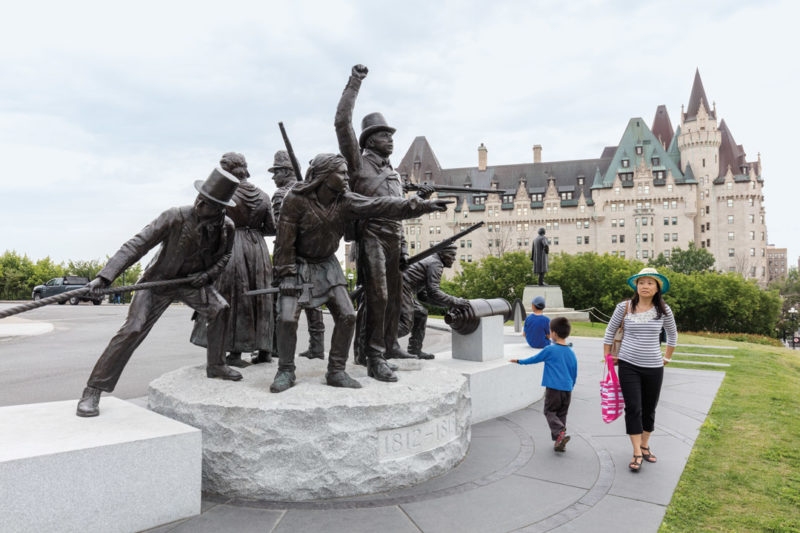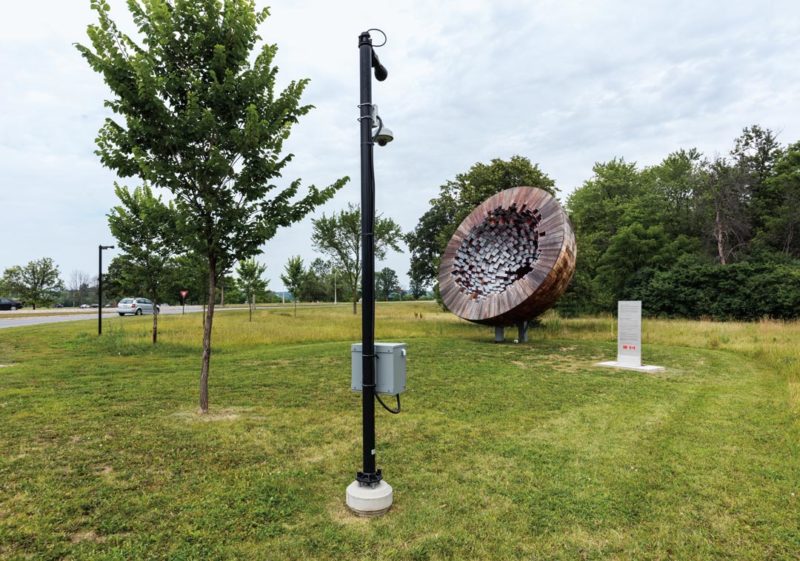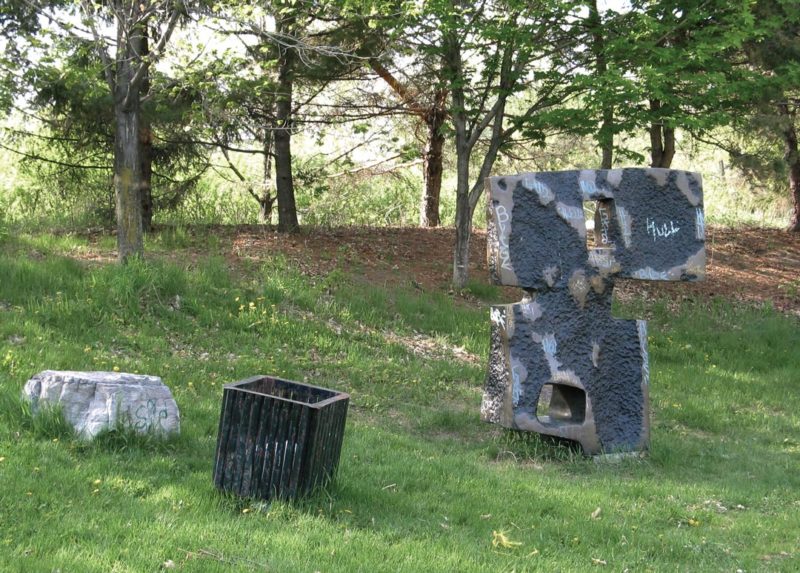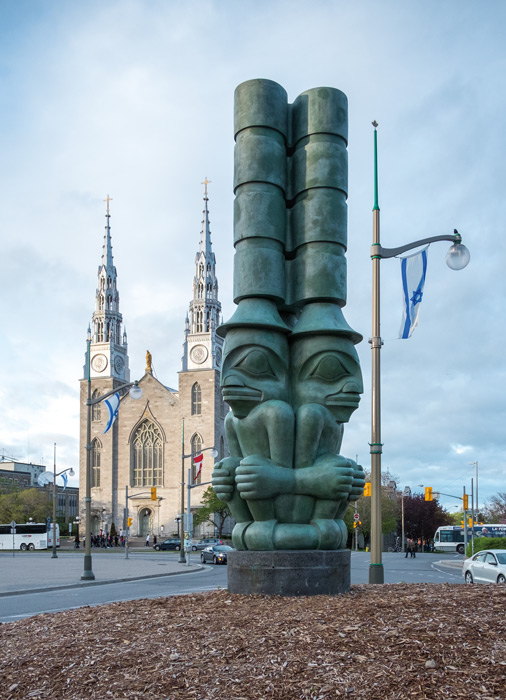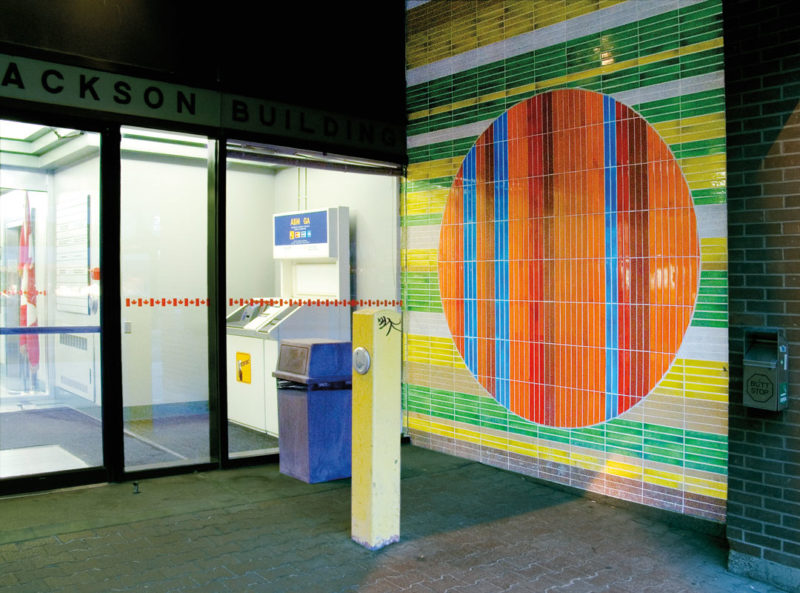By Laurent Vernet
“Obsession”: that’s the word that photographer Justin Wonnacott uses to explain his ambitious project Pictures of Art (Images d’art).1 The subject of this series, which numbers 350 images to date, is the artworks found in public spaces and sites (monuments, works of public art and works integrated with architecture, graffiti) in the National Capital Region. The corpus of some eighty photographs presented in summer 2017 at the Gatineau-region artist-run centre AXENÉO7, as part of the event À perte de vue, is thus only an excerpt, especially as there is no indication that Wonnacott’s project will be completed anytime soon. Included in the event’s program, which also featured impressive monumental installations created mainly for the soccer pitches of La Fonderie – a municipal building whose playing fields are closed during the hottest months of the year –, Wonnacott’s presentation posed the questions of scale and landscape differently. Arranged one after another, the photographs were notable in this context for their small format, which also contrasted with the scale of the objects they showed. It should be noted that the final form of the project, according to one of Wonnacott’s self-imposed working constraints, will be a book, which implies a personal, even intimate relationship. Extracted from their usual environment, from the places that people visit daily, monuments and works of public art became images unto themselves under the gaze of Wonnacott, who admits that his photographs do not always show them in their best light.
For this project, Wonnacott became a flâneur, taking strolls through the region and casting a fresh, curious, and surprised gaze at his environment. Although he perceived himself as an “art user” and not an expert,2 the questions that underlay his approach resembled those of a sociologist of art: “What is [the artwork] for? Who paid for it? Will it last? Should it last? Why does it look like that? What histories inform the artwork? . . . and above all . . . What is the politics of this work?” The strength of his images lies in the fact that their viewers are encouraged to ask precisely these questions about the functions and uses of artworks in public spaces.
The path that takes shape through the photographs juxtaposed in this corpus could take many directions. Pictures of Art begins to look like a psycho-geography of the Ottawa-Gatineau region, crystallizing a shift developing around these works that we call public. The result, beyond the astonishment at the large number of works in the territory covered, stimulates thought about the effects of commemoration and public-art policies on the urban landscape. For example, what vision of the nation can one surmise when one looks at the commemorative projects initiated or inaugurated under Stephen Harper’s Conservative government (2006–15)? Wonnacott’s comments on this subject are subtle but critical. The sculptural group of seven figures commemorating the War of 1812, Adrienne Alison’s Triumph through Diversity (2014) – the first military monument on Parliament Hill – are armed and ready to do battle. The photograph shows the monument as an Asian woman passes it, as if she were about to be attacked by the bronze Indigenous warrior pointing in her direction. Wonnacott is asking, ironically, has Canadian diversity triumphed – and if it has, at what price? Then there’s Douglas Coupland and Mary Tremain’s Canadian Firefighters Memorial, photographed as it was being constructed. The large-scale gold-tinted anonymous figure stands erect and alone in the middle of the site, protected by orange-plastic netting that barely contains it. Might this evoke the real solidity of the national identity that we obstinately attempt to build on the backs of heroes? In fact, isn’t Wonnacott capturing the instrumentalization of these demi-gods when he shows only the legs of John Hooper’s 1983 statue of Terry Fox, flanked by a man whose arms are crossed behind him?
Wonnacott explores the relationships that we maintain with these objects – the functions that they might have in our social life. A number of the photographs bring artworks and users of public spaces together. In these compositions, the monuments are often tightly framed to dwell on just a detail of the composition. Of the 1895 monument to John A. Macdonald by Louis-Philippe Hébert, we see only, in the foreground, the female body of an allegorical figure holding a flag, while the edge of the composition shows several people sitting on the steps to the monument and at a picnic table. Also addressing the question of the weight of history is the photo- graph in which we see Hamilton McCarthy’s Anishinabe Guide (1918). Wonnacott plays skilfully on the ambivalence of a man sitting behind the statue of the First Nations figure: he covers his face with his hand so he can’t be identified, but, in this context, he seems to express shame or sadness with regard to the fate suffered by these populations. And contemporary artworks are similarly reflected on. Gathie Falk’s Veneration of the Blue Collar Worker (Vénération du col bleu) (1973) is part of the daily routine of civil servants who visit the cafeteria in the Lester B. Pearson Building; the mural is so well integrated into its surroundings that the room’s furniture and floor take up its colours. Similar questions are behind the photographs of Stephen Brathwhaite’s The Builders (Les bâtisseurs) (1989), which serves as a strangely dramatic setting for the municipal council; Chantal Gaudet’s 2013 Bambini, providing a unique setting for a religious procession that takes place under police surveillance; and Andrew O’Malley’s deliberately kitsch Community Channel (Voie communautaire) (2014), a grouping of silhouettes with various profiles high on a wall, under which users have gathered.
Pictures of Art is also a study of the numerous dynamics that give shape to the city at different levels. Economic activities are the background of Don Foulds’s Spiral Strength (Résistance en spirale), as shown in “For Rent” signs on the commercial building that the sculpture stands in front of; it is similar for the image presenting a detail of Christopher Keene’s The Hunt (La chasse) (1986), which seems to promote a bank. Meanwhile, an untitled work by Jean-Paul Mousseau introduces an automatic bank machine. Dynamic in another way, the seasonal impact of snow-removal operations on public art is obvious in the photograph of The Wellington Marbles (2010) by Marcus Kucey-Jones and Ryan Lotecki. Finally, the lack of respect for certain artworks in the urban environment is addressed in the photograph of Yves Guérin’s 1988 Balancier (1988), located in a site that is now derelict.
Obliquely, Wonnacott is forming a portrait of the contemporary art scene, by showing how Pierre Bourgault, Marie-France Brière, Germaine Koh, Gary Neil Kennedy, Jean-Yves Vigneau, Catherine Widgery, and many others have shaped the landscape of the National Capital Region. He gives visibility to these artists, including those who express themselves through graffiti. It is perhaps in these photographs, which freeze clandestine and ephemeral gestures in time, that Wonnacott reveals, through his treatment of colour and light, the sensitivity to and fascination with the work of others that impel him (and us) through public spaces.
Translated by Käthe Roth
2 See justinwonnacott.photography/bob.
Laurent Vernet holds a master’s degree in art history and a doctorate in urban studies. He is interested in the interactions that artworks in public spaces provoke. He received the Prix Jean-Pierre-Collin 2016 for the best dissertation in urban studies. His essays on contemporary art have been published in various Quebec magazines (ESPACE art actuel, Spirale, Ciel variable) and his research has been published in books, including Urban Encounters: Art and the Public (McGill-Queen’s University Press, 2017). He is a commissioner at the City of Montreal’s Bureau of Public Art, teaches at the Université du Québec à Montréal, and commentates on public art on radio station CIBL.
Justin Wonnacott is a photographer and artist whose practice spans forty years. He has produced a number of photographic series, most of them accompanied by publications. Pictures of Art is the most recent of these books. His work is represented in many institutional collections in Canada, including the National Gallery of Canada, the Carleton University Art Gallery, the Ryerson University Image Centre, and the Ottawa Art Gallery. He received the Karsh Award from the City of Ottawa in 2005, and was inducted as a member of the Royal Canadian Academy in 2009. He currently teaches in the Visual Arts Department of the University of Ottawa. www.justinwonnacott.photography

